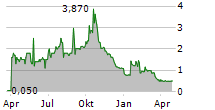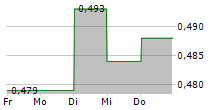Since this Post Market Surveillance study is open-label (uncontrolled), it is possible - and the sponsor's responsibility - to actively monitor study data during the ongoing trial. It is both scientifically and regulatorily permissible to summarize efficacy and safety data.
"It is highly gratifying that all key efficacy endpoints defined in the study design have been met with statistical significance, and that the long-term follow-up confirms the preventive effect of the Ozilia treatment. This means we will close the study in August," says Anders Weilandt, CEO of Chordate.
"Although additional data and further analyses will be performed ahead of a forthcoming full publication, this selection of results provides a clear indication of reduced medication intake and annual need for Ozilia treatment as long-term effects. The overall outcome strongly reinforces our ongoing efforts to sell the company."
As approximately half of the study population had been recruited, a statistical monitoring analysis was conducted on the data collected. The purpose of this monitoring was to assess whether the data - focusing on a selection of efficacy outcomes recorded from the start of patient inclusion until May 26, 2025 - would be sufficient to meet the study objectives.
Parts of the preliminary analysis, as reported by the study statistician and pending full analysis and publication of all data, are summarized below:
- Primary endpoint results for all participants:
"Change from baseline (i.e. 4-week screening period) in the proportion of days with moderate-to-severe headache compared with the 4-week period starting the day after the third treatment" showed an average reduction of more than 4 headache days, with high statistical significance.
- Secondary endpoint results (selected) for all participants:
a) "Change from baseline in the proportion of migraine days (regardless of intensity)" showed an average reduction of more than 4 migraine days, with statistical significance.
b) "Proportion of participants with a =30% and =50% reduction in moderate-to-severe headache days" showed 29% achieving =30% reduction and 14% achieving =50% reduction.
- Secondary endpoint results (selected) from long-term follow-up (estimated over 365 days) for all participants:
c) "Change (from baseline to 28-day periods after Visit 3) in the proportion and number of days with moderate-to-severe headache and/or migraine" showed a statistically significant reduction in the proportion of headache days compared with baseline, calculated across the entire one-year period as well as in each half-year period.
d) "Change from baseline in the proportion of migraine days compared with periods after Visit 3" showed a statistically significant reduction up to approximately 200 days, after which the number of reporting participants became too small for analysis.
e) Subgroup analysis of participants reporting >2 days' reduction in headache days chosed to receive approximately 5.6 treatments per year.
f) "Change from baseline in the proportion of days with medication use compared with periods after Visit 3" showed a reduction in the number of days with medication over the one-year period, with a statistically significant reduction between approximately Day 60 and Day 200, after which the number of reporting participants became too small for analysis.
For more information, please contact:
Anders Weilandt, CEO
anders.weilandt@chordate.com
Cell: +46 733-874277
About Chordate
Chordate Medical Holding AB (publ) is a medical technology company that has developed, patented and CE-marked Ozilia® Migraine, a neuromodulation and drug-free treatment technology for chronic migraine and chronic rhinitis. The treatment has clinically proven efficacy according to a recent study, and is marketed in selected markets in the EU and the Middle East. Chordate Medical is listed on Nasdaq First North Growth Market Stockholm (ticker: CMH). Read more at www.chordate.com
The company's Certified Adviser on Nasdaq First North Growth Market Stockholm is Bergs Securities AB.
N.B. The English text is an in-house translation of the original Swedish text. Should there be any disparities between the Swedish and the English text, the Swedish text shall prevail.


